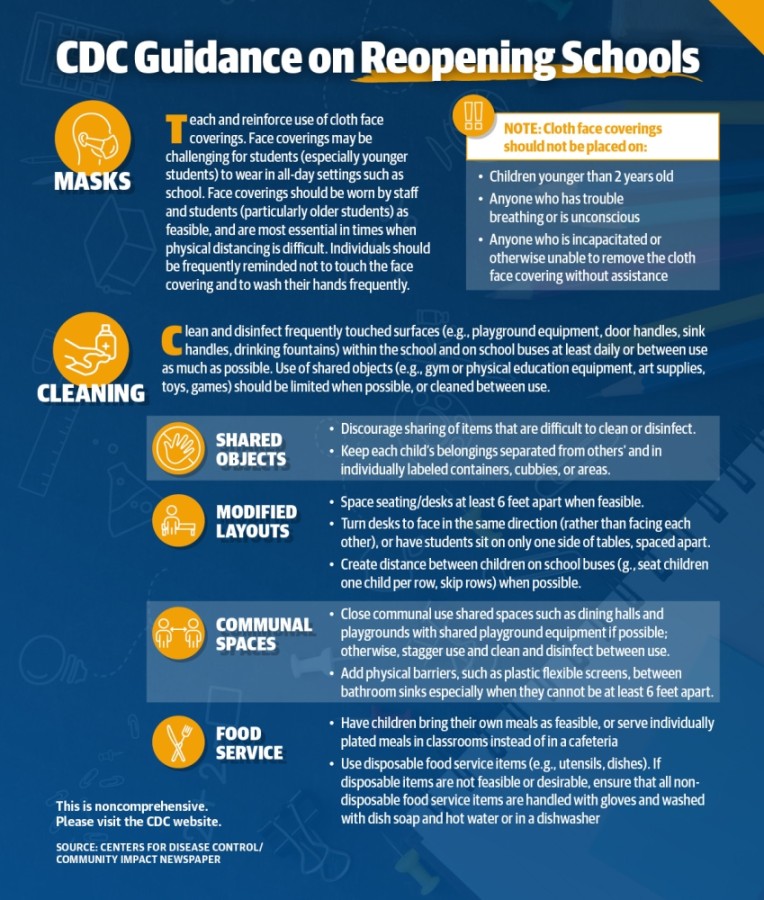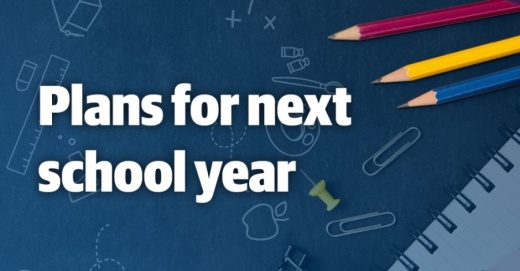During a June 15 trustee board work session, Superintendent Robin Ryan said there are four different options the district is considering for August. These range from all students in physical buildings from the beginning of the school year to intermittent virtual learning based on emergency closures, with hybrid in-person and e-learning models in between.
But before a decision is made, there are lots of items to consider, Ryan said. These includes streamlining and communicating hygiene and respiratory standards for students, staff, visitors and facilities; creating adequate signage for campuses and facilities about these new standards; how to handle visitors and field trips; whether adjustments are needed to the school schedule; what attendance policies are going to be from the state; and how transportation is affected, among other items.
If schools have to close due to COVID-19, one thing is for sure, Ryan said.
“Learning has to continue,” he said. “We have to get our yearly 75,600 minutes.”
Ryan said his preference would be for everybody to be in physical buildings, but that this might not be possible with the virus still out there. If classes do return fully to being in physical buildings, Ryan said there would probably be some options for students to participate online instead of in-person if they had health concerns.
Deputy Superintendent Brad Schnautz is overseeing frameworks and subcommittees to address contingency plans related to the coronavirus for the upcoming school year.
“There are things to consider,” Schnautz said. “We’ve worked to tackle this by creating seven framework committees. ... Each framework has formed a committee, and then we have a lot of subcommittees off of those framework committees that are focused on different areas.”
The seven different framework committees are:
• facilities and transportation;
• campus leadership;
• parents;
• technology;
• students;
• teachers; and
• instructional and professional development.
These framework committees also have subgroups that are working to address key areas, from personal protective equipment for students to parent training on remote learning.
“We’re trying to make sure that wherever students are, they get good instruction,” Ryan said.
The committees are still being formed and will be more fully shaped once more guidance from the state becomes available, Schnautz said.
“We're going to be pulling in parents, we're going to be pulling in students, we're going to be pulling in different stakeholder groups to help us finalize and fine-tune the details and the plans around next year and the fall return, especially," he said.
Guidance on reopening schools
On May 19, the Centers for Disease Control and Prevention released updated guidance for reopening schools.
"As some communities in the United States open K-12 schools, CDC offers the following considerations for ways in which schools can help protect students, teachers, administrators, and staff and slow the spread of COVID-19," reads the CDC webpage on school guidance. "Schools can determine, in collaboration with state and local health officials to the extent possible, whether and how to implement these considerations while adjusting to meet the unique needs and circumstances of the local community. Implementation should be guided by what is feasible, practical, acceptable, and tailored to the needs of each community."
The CDC highlighted the three risk levels associated with opening schools.
"The more people a student or staff member interacts with, and the longer that interaction, the higher the risk of COVID-19 spread," reads the web page.
According to the CDC, the risk of COVID-19 spread increases in school settings as follows:
Lowest risk: Students and teachers engage in virtual-only classes, activities and events.
More risk: Small, in-person classes, activities and events. Groups of students stay together and with the same teacher throughout/across school days, and groups do not mix. Students remain at least 6 feet apart and do not share objects (e.g., hybrid virtual and in-person class structures, or staggered/rotated scheduling to accommodate smaller class sizes).
Highest risk: Full sized, in-person classes, activities and events. Students are not spaced apart, they share classroom materials or supplies, and they mix between classes and activities.
The CDC includes guidance on everything from shared materials to masks to field trips.
When it comes to masks, the CDC recommends teaching and reinforcing the use of cloth face coverings for children over the age of 2, but notes that it may be challenging for students to wear them all day in school. The CDC recommends that face coverings be worn by staff and students, particularly older students as feasible, and that the masks are most essential during times when physical distancing is difficult.
The CDC recommends that frequently touched surfaces are cleaned and disinfected at least daily or between use as much as possible. The use of shared objects should be limited when possible or cleaned between use.
Desks should be at least 6 feet apart when feasible, according to the CDC, and all desks should face the same direction. Distance should also be created between students on school buses when possible.
The CDC recommends closing communal use shared spaces—such as dining halls and playgrounds—if possible. If those areas are not closed, school officials are advised to stagger use and disinfect between use. Physical barriers, such as plastic flexible screens, should be added between bathroom sinks when they are not 6 feet apart.
Students should be encouraged to bring their own meals when possible, or schools should serve individually plated meals in classrooms instead of in a communal cafeteria.
The entire list of CDC guidance can be found here.

Additional reporting by Alexa D'Angelo





